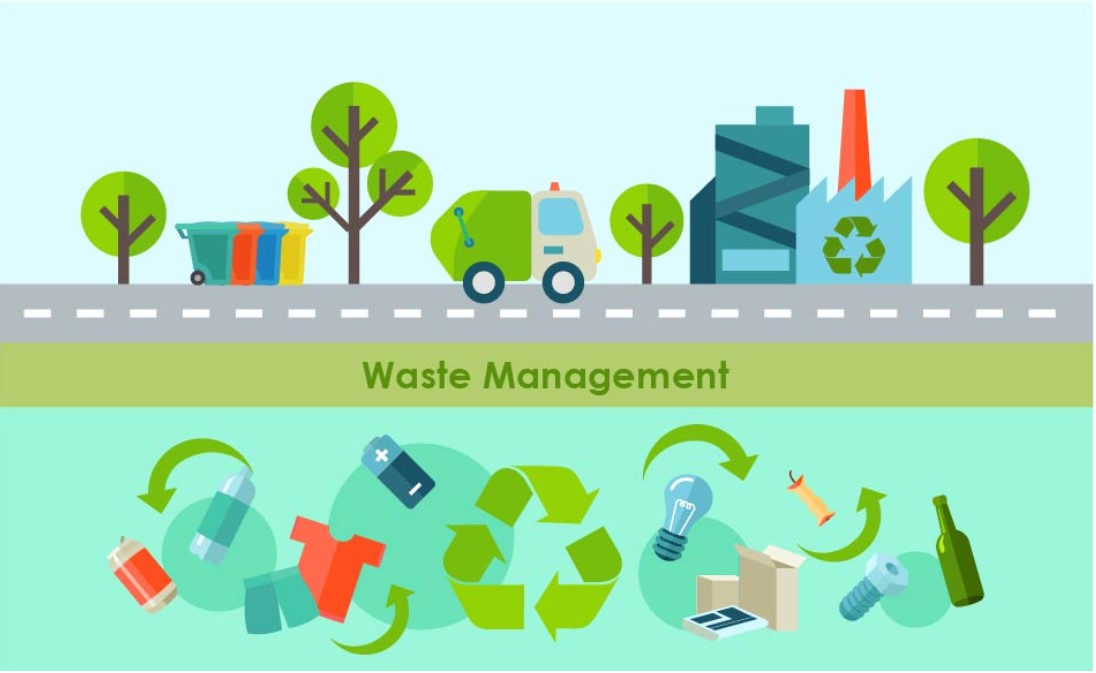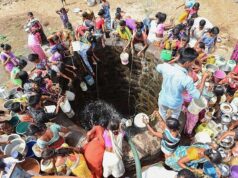India has been on a trajectory of progressively increasing levels of urbanisation since independence, with waves of migration from rural to urban agglomerates in search of better life and employment opportunities. Presently, over 377 million urban people live in 7,935 towns and cities, which is expected to double by 2035. Urban India generates 62 million tonnes of municipal solid waste per annum. Several landfills surpassing the heights of globally recognised monuments like Qutub Minar are now a common sight in cities.
Resource-starved Urban Local Bodies
Sanitation primarily rests in the domain of the state list, with solid waste management (SWM) being an essential service provided by Urban Local Bodies (ULBs). However, ULBs continue to face the historical problem of the three F’s, funds, functions, and functionaries, making them vulnerable to governance failures.
ULBs are yet to ensure a 100 per cent collection of solid waste. Under the Swachh Bharat Mission, the releases to ULBs were a meagre 50 per cent of the total budget allocation. Hence, only 75-80 per cent of the municipal solid waste (MSW) is collected, of which 22-28 per cent remains untreated or unprocessed. Furthermore, per the Annual Report of the Central Pollution Control Board for 2020-21, India generated approximately 160,000 tonnes per day (TPD) of solid waste, of which approximately 153,000 TPD was collected, 80,000 TPD was segregated and treated, and 29,000 TPD was landfilled. Thus, the remaining waste of approximately 43,000 TPD was neither segregated nor treated scientifically. The mounting heaps of garbage and stinky landfills now dot the landscape of metropolitan cities like Maharashtra and Delhi, which continue to lead in per-day solid waste generation.
A critical challenge faced in solid waste management pertains to the ‘lift and dump’ model pursued by contract-based transporters hired by the municipalities. Presently, around 20 per cent of ULBs’ budget is spent on paying transporters engaged in the dumping of the wastes. This model has outlived its utility, as landfills continue operating unscientifically because they lack suitable liner systems, leachate management, gas collection, and treatment. This makes the untreated waste vulnerable to uncontrolled fires, insufficient coverage and odour control, and poor waste segregation and recycling methods. Transporters are rarely interested in how the waste is disposed of and processed.
The Swachh Bharat Mission 2.0 intends to make Indian cities garbage-free through effective waste source segregation, 100% door-to-door pickup, and thorough waste remedial treatment. However, India still needs solutions that quantify the outcome towards a high-value, low-cost strategy. There persists a particular requirement to standardise relevant technologies with cost breakdowns for operation and maintenance, including procurement, in addition to official identification and appointment of service providers.
Currently, India’s linear-waste management approach (comprising resource extraction, manufacture, consumer use, and trash disposal based on a ‘take-make-dispose’ concept) remains squarely focused on waste disposal. This preferential pattern must be switched and waste prevention prioritised to ensure a complete harmonisation and shift towards a circular economy. These steps must be within a framework where the ‘measurement’ of solid waste is considered the key aspect. Placing waste management at the centre stage will enable informed decision-making, developing effective waste management strategies, evaluating initiatives, and monitoring progress towards waste reduction and sustainability goals.
At present, India lacks measurement indicators for solid waste; hence, a consolidated data inventory must be created since ‘what gets measured gets managed’. This approach would keep the policymakers ahead in the race to a zero-waste future while ensuring a sustainable future for all.
Figure 1:The Waste Hierarchy and the Circular Economy
Note. Panel (a) illustrates the waste management hierarchy framework that guides and ranks waste management decisions at individual and organisational levels. Panel (b) illustrates the circular economy approach as a sustainable alternative to the traditional linear model.
The Way Forward
India’s SWM lacks effective waste segregation at the point of origin, primarily because of no segregator indicator on product packaging. As part of a product’s packaging, this indicator designates the proper waste stream (recyclables, non-recyclables, or organic waste) for disposal of the product. The segregator indicator acts as a visual indicator for consumers on the appropriate manner of disposal, dissuading the waste generator from disposing of the waste in separate bins. Therefore, the government must frame ‘segregator indicator at every product’ bye-laws to enable effective waste segregation. Visual disposal cues on product packaging would cut down on community participation expenditures. Furthermore, by incorporating clear symbols or labels on product packaging, the segregator indicator system automates knowledge dissemination, allowing individuals to easily understand and follow waste segregation guidelines. This further improves waste management practices and raises public awareness at no additional cost to the producer. As the famous saying goes, charity begins at home; hence waste segregation at the point of origin itself will streamline the subsequent processes. The Ministry has issued guidelines for extended producer responsibility for plastic packaging, mandating targets for recycling plastic packaging waste, reusing rigid plastic packaging, and using recycled plastic content. While the government has been proactive in introducing extended producer responsibility guidelines, currently, there is no proposal under consideration for introducing a ‘Segregator Packaging Indicator’.
The increasing thrust of digitisation and e-governance is also resulting in rising e-waste. Per the Ministry of Electronics and Information Technology, the e-waste generation in India is increasing at a rate of ten per cent per annum. An effective way to tackle e-waste is using the ‘repair not replace’ approach, thereby prolonging the durability of electronic products. The ‘right to repair’ movements worldwide testify to the increasing acceptance of this approach as it extends product lifespans, reducing e-waste, and fostering innovation. Moreover, it would boost product competition while upholding digital rights and promoting knowledge sharing. For instance, in India, industry figures estimate an annual revenue of over $20 billion for four years from 2025 onwards and an employment generation of over five million jobs in the electronics repairing sector. Hence, in rapidly developing countries like India, the idea of the right to repair should be legislated to prevent unnecessary waste generation.
Considering the complexities of steps involved in urban waste management, policymakers should take lessons and emulate best practices at each step. Mawlynnong, dubbed Asia’s cleanest village, saw increased community participation in waste management. Similarly, Indore, which has topped Swachh Bharat Rankings, has been instrumental in efficiently organising door-to-door waste collection from source and ensuring effective waste segregation.
One such step that is highly recommended is where waste collection is done by private contractors and NGOs. Data shows a 100 per cent waste collection efficiency in these jurisdictions. An example of the public-private model is the Pune-based Solid Waste Collection and Handling Cooperative Society, formed in 2008. It has successfully upgraded Pune’s SWM system by incorporating transparent third-party audits, decentralisation with NGO and private sector participation, and diverse waste management initiatives, including bio-methane plants, composting projects, and waste separation systems. Collaborations with private CSR initiatives and the successful implementation of waste recycling for energy recovery have further contributed to Pune’s waste management model. Pune’s SWM model has boosted and preserved the lives of its 3,500+ informal waste worker members through the SWaCH Cooperative. Through daily interactions with the public, media events, and international platforms, the waste workers engage with the community to raise awareness about best waste management practices. Additionally, the cooperative extends support to the families of waste workers, offering work opportunities and access to formalised services, such as ID cards and insurance, and micro-credit, education and vocational training for their family members. The initiative successfully integrated marginalised waste workers into the formal waste management system and fostered deep engagement within the community.
As India imbibes its journey of being a net-zero emitter, it is important to reiterate the need to combine innovative solutions with data measurement and collection. Proper management of waste data has two main benefits. First, it allows us to focus on and fix areas that need improvement, thus saving money. Second, it helps us plan and implement new technologies and incentives, encouraging the private and public sectors to work together. As India moves towards creating a circular economy, it is imperative that our approach to SWM is proactive and not reactive and that steps are taken to ensure that India is not left behind in the race to a sustainable future.
Read more: The Siren Call of Welfare Politics: A Bad Political Equilibrium
Post Disclaimer
The opinions expressed in this essay are those of the authors. They do not purport to reflect the opinions or views of CCS.






